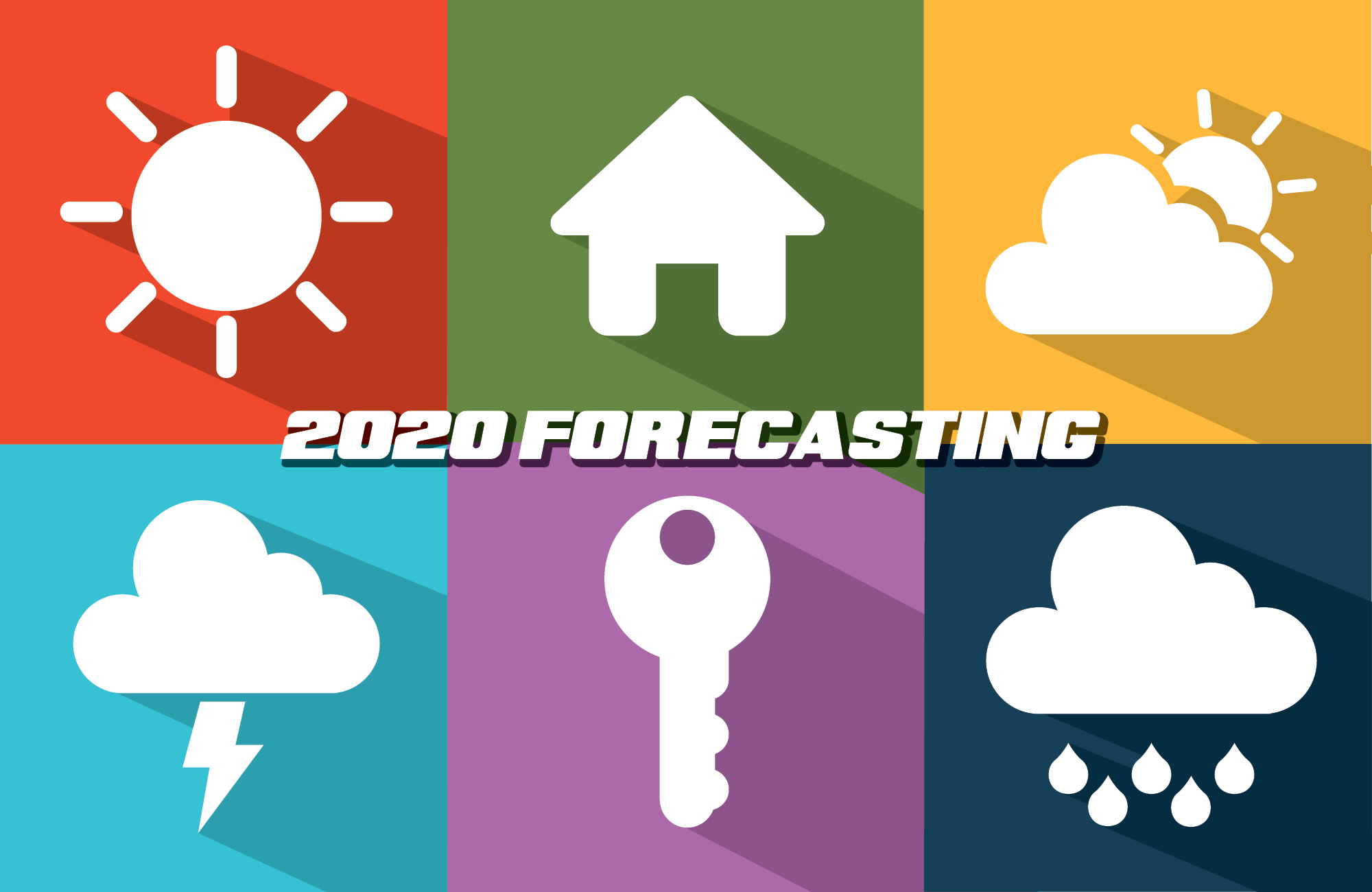
2020 Real Estate and Mortgage Forecast
2020 Real Estate and Mortgage Forecast
Wondering what the housing market might look like in 2020? We gathered predictions from 4 major real estate sources: National Association of Realtors, Realtor.com, Redfin and Zillow. While they all agree that interest rates will remain low, their outlooks vary on the strength of the economy and the housing market in 2020. Here's what they had to say:
National Association of Realtors
Lawrence Yun, Chief Economist for the National Association of Realtors:
“I do not foresee a recession in 2020,” Yun said. “The U.S. is in need of more new housing…Historically, anytime that we have needed to build, there was never a recession. This is an incentive for builders to start more construction. If they do, I think we will have at least 12 consecutive years of economic expansion.”
- New-home sales probably will jump 11% to 750,000 (highest reading since 2007.)
- Sales of existing homes likely will increase by 3.7% to 5.56 million in 2020, the highest tally since 2017.
- Some loosening in inventory will happen in 2020, and so we expect home sales to rise
- The average U.S. rate for a 30-year fixed mortgage probably will stay at 3.7% through the second quarter of 2020. In 2020’s final two quarters, it likely will rise to 3.8%.
Realtor.com 2020 Predictions
- Home price growth will flatten, with a forecasted increase of 0.8 percent. With the supply of available homes continuing to balance on a tightrope, and the entry-level demand expected to remain strong, prices are estimated to tick up 0.8 percent in 2020.
- Inventory will remain constrained, especially at the entry-level price segment. The market is still years away from reaching an adequate supply of homes to meet today’s demand from buyers. Despite improvements to new construction and short waves of sellers, next year will once again fail to bring a solution to the inventory shortage.
- Mortgage rates are likely to bump up to 3.88 percent by the end of the year. While short term rates remain low, economic moderation is likely to impact bond markets, leading to mortgage rates moving mostly sideways in 2020. Rates for 30-year fixed mortgages are projected to average 3.85 percent during the next year.
- Tight inventory and rising mortgage rates will lead to dropping sales. Sales of existing homes are expected to decline by 1.8 percent in 2020, as the continuing supply shortage and moderating price growth will hamper buyers and tamp down sellers’ expectations.
Redfin
- Bidding wars will rebound thanks to low mortgage rates and a lack of homes for sale. Low mortgage rates will continue to strengthen homebuying demand, but due to a lack of new homes for sale and homeowners staying put longer, there will be fewer homes on the market in 2020 than in the past five years. More demand and less supply mean bidding wars will rebound in the first quarter. We expect about one in four offers to face bidding wars in 2020 compared to only one in 10 in 2019.
- 30-year fixed mortgage rates will stabilize at 3.8%. Throughout 2020, 30-year fixed mortgage rates will remain low, hovering around 3.8%. Faced with slowing economic growth, the Federal Reserve will keep interest rates low.
Zillow
- The U.S. will not enter a recession in 2020. As recently as July, half of experts surveyed by Zillow predicted a recession would begin in 2020. However, the U.S. economy has remained resilient to expected headwinds like ongoing trade volatility and the possibility of a stock market retreat.
- Home value and rent growth will be slower and steadier. Home value growth is expected to grow 2.8% from December 2019 to December 2020, according to a survey of more than 100 housing experts and economists. That's down from 4.7% annual growth in October, the latest month for which data is available.
- Mortgage rates will stay low, keeping housing demand high. Mortgage rates fell markedly in 2019 and are expected to remain low for the bulk of 2020.
- Sales will climb again after a downturn in 2018. For-sale inventory is near historic lows, but that doesn't mean a dearth of sales. In fact, the low inventory is largely a result of high demand from buyers that snatch up homes as soon as they hit the market.
Takeaways: While these sources differ on their outtakes, they all predict interest rates to remain close to historic lows, saving borrowers money in interest. As inventory remains low, borrowers should be fully prepared to put an offer in on a home while home shopping. So, if you’re thinking about purchasing a house in 2020, it’s important to get a letter of pre-approval from a local lender before starting your home search.
This will make your offer more attractive to the seller, by giving them confidence that you can afford to purchase their home. In a market where inventory is tight, a letter of pre-approval can make the difference in whether your offer is accepted or not.
The information contained herein (including but not limited to any description of lending programs and products, eligibility criteria, interest rates, fees and all other loan terms) is subject to change without notice. This is not a commitment to lend.
Sources: NAR, Zillow, Realtor.com, Redfin
< Go Back
